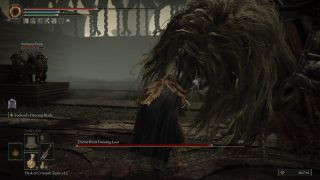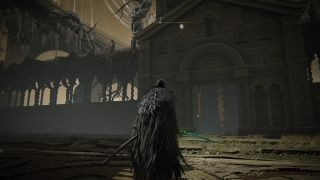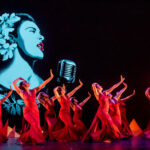The Divine Beast Dancing Dragon is an early boss in Elden Ring’s Shadow of the Erdtree expansion that can present a significant challenge on your first encounter. However, with the right approach and a bit of patience, this ancient being can be overcome. Understanding its attack patterns and phases is key to securing victory.
Divine Beast Dancing Dragon Phase One: Dominate with Aggression
 Elden Ring Divine Beast Dancing Dragon Phase One
Elden Ring Divine Beast Dancing Dragon Phase One
(Image credit: FromSoftware)
Phase one of the Divine Beast Dancing Dragon fight typically lasts until you’ve depleted roughly one-third to one-half of its health. This initial phase is your prime opportunity to unleash aggressive attacks and rack up damage. During this stage, the Dancing Dragon is notably susceptible to being staggered, opening windows for critical hits. Employing jump attacks or powerful Ashes of War such as Moonveil’s Transient Moonlight or Eleonara’s Poleblade’s Bloodblade Dance can be highly effective. While Bleed and Frost build-up might be less impactful, raw damage and stagger tactics are your best bet in phase one.
The Divine Beast Dancing Dragon possesses several aerial attacks in this phase, including dive bombs and a command grab. While the grab attack can be punishing, it is generally less lethal compared to similar grabs from bosses like Malenia or Astel in the base game. It’s more of an annoyance than a potential run-ender.
One of the trickier moves to watch out for in phase one is the Dancing Dragon’s breath attack. Often appearing at the end of its longer combos, the dragon will rear up on its hind legs, seemingly presenting an opening for attack. However, this is a deceptive moment. It’s crucial to back away immediately when you see this rearing animation, as staying close will almost certainly result in taking damage from the circular breath attack. Recognizing this tell is key to avoiding unnecessary damage in phase one.
Divine Beast Dancing Dragon Phase Two: Elemental Adaptation is Key
 Elden Ring Divine Beast Dancing Dragon Phase Two Elemental Power Up
Elden Ring Divine Beast Dancing Dragon Phase Two Elemental Power Up
(Image credit: FromSoftware)
Phase two of the Divine Beast Dancing Dragon fight commences when the boss reaches approximately two-thirds to one-half of its health remaining. This phase introduces elemental power-ups, cycling through three distinct elements, typically starting with lightning. While the Dancing Dragon’s core moveset largely remains consistent, each elemental infusion adds a new layer of challenge and requires adjusted strategies:
-
Lightning: Drawing inspiration from Ancient Dragon encounters in the base Elden Ring game, the Dancing Dragon gains the ability to summon lightning strikes. The ground will briefly glow, telegraphing the lightning’s impact location. During this phase, it becomes riskier to remain close to the boss for extended periods, as you can easily be caught out by the lightning strikes while attempting to deal damage. Patience and calculated strikes are more important here.
-
Frost: This elemental phase is arguably the most dangerous. The Dancing Dragon’s attacks now inflict frost build-up, with its breath weapon being particularly potent at applying frostbite. Additionally, it gains a Hoarfrost Stomp-style Area of Effect (AOE) attack. This AOE move can be dodged or jumped over, but the constant frost pressure makes this phase demanding. Maintaining distance and carefully timing your dodges are crucial for survival.
-
Air: While still challenging, the Air phase often feels like the safest portion of phase two. However, the Dancing Dragon gains a homing tornado attack that can be difficult to evade. Dodging through or outrunning the tornado requires precise timing and positioning. Despite this new move, the lack of elemental build-up compared to the Frost phase makes the Air phase generally more manageable.
If the Divine Beast Dancing Dragon proves too overwhelming, consider summoning Redmane Freyja before entering the boss room. While untested without initiating her questline, speaking to her at the Three Path Cross site of grace in the Gravesite Plain is recommended anyway for quest progression. Summoning Freyja can significantly ease the pressure of the fight, allowing you to focus on learning the boss’s patterns and openings.
Persistence is paramount. With continued attempts and adaptation to its phases, the Divine Beast Dancing Dragon will eventually fall. Upon defeating this boss, remember to explore the area beyond the boss room. Proceed through the door and ascend the elevator located on the northern wall (to your right when facing away from the entrance). This area holds crucial context and lore that you might otherwise miss in your initial Shadow of the Erdtree playthrough.
Explore further into the Shadow of the Erdtree and uncover more of its secrets:
Leda quest: Track the Erdtree main quest
Ansbach quest: Help the former servant of Mohg
Hornsent quest: Complete the quest for vengeance
Thiollier quest: Pay homage to the saint of sleeping
Freyja quest: Where to find Redmane Freyja


